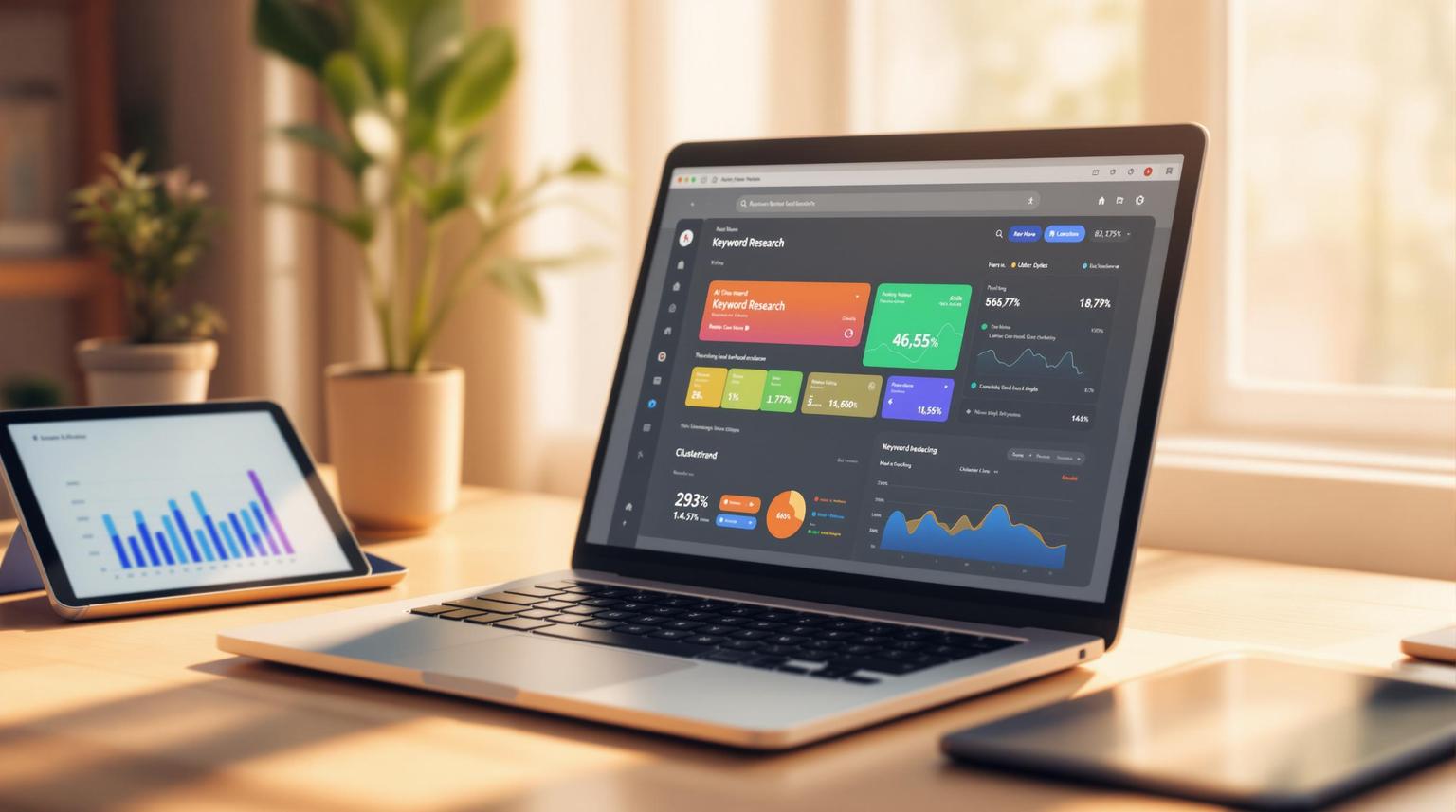AI keyword research makes finding the right keywords faster and easier. It uses machine learning and natural language processing (NLP) to analyze search data and user behavior. Here's what it does:
- Finds keywords quickly: AI tools analyze large amounts of search data in seconds.
- Understands search intent: They match keywords to what users are really looking for.
- Tracks trends: AI spots new and emerging topics in real time.
- Improves accuracy: It reduces errors and organizes data for better SEO strategies.
Key Benefits of AI for Keyword Research
- Automates tedious SEO tasks.
- Suggests long-tail and niche keywords.
- Analyzes SERPs to optimize content.
- Finds keyword gaps and low-competition opportunities.
AI tools also prioritize keywords based on search volume, difficulty, and relevance, helping you focus on the best ones for your content.
Next step: Use AI-powered tools to expand seed keywords, analyze SERPs, and create data-driven content strategies.
AI for Keyword Research: Game-Changing Strategy (2023)
AI Keyword Generation Process
The AI-powered keyword generation process works through three main steps. It starts with your seed terms and uses advanced tools to find specific variations, refine them using live data, and organize keywords based on user intent:
- Discover long-tail and niche keywords by analyzing search patterns.
- Refine suggestions using up-to-date performance metrics.
- Organize and prioritize keywords based on the likely intent of users.
Search Intent and SERP Analysis
Once you've created and ranked your keyword lists, the next step involves using AI to study user intent and examine SERP (Search Engine Results Page) trends to fine-tune your strategy.
AI reviews SERPs to categorize search queries into three main types: informational, navigational, or transactional. This helps determine the direction your content should take. It also evaluates the top-ranking pages for your chosen keywords, uncovering common themes, content formats, and missed opportunities. This process supports on-page audits and competitor analysis, helping you make content adjustments that improve rankings while meeting user needs.
sbb-itb-c597ff7
Data Analysis and Results
After refining search intent and tracking SERP trends, AI evaluates keyword data to identify optimization opportunities. It uses metrics like search volume and keyword difficulty to create actionable strategies.
Identifying Keyword Gaps
AI helps spot overlooked keywords by studying search behavior and market patterns. It can highlight terms with strong potential but low competition, offering new opportunities for content optimization.
Key areas of analysis include:
- Search volume trends: Reviewing historical data and predicting seasonal shifts.
- Competition: Evaluating difficulty levels and assessing content saturation.
These insights enable you to stay ahead of developing trends and adjust your content strategy accordingly.
Turning Data Into Actionable Plans
AI tools assign priority scores by factoring in volume, difficulty, and relevance. They also generate recommendations for content, including topic structures, on-page elements (like title tags, meta descriptions, and headings), and internal linking strategies.
Focus on high-impact topics using these insights. Keep an eye on performance metrics and adjust your approach as trends shift over time.
AI-Powered SEO and Content Tools Directory Guide
Once you understand how AI identifies and analyzes keywords, this directory can help you choose the right tools for your needs. Tools are grouped by their main functions.
Keyword Research Tools
These tools help with keyword discovery, understanding search intent, and spotting gaps in your content strategy.
- Keyword suggestion tools: Create and refine keyword lists using search data.
To get the most out of these tools, look for features like:
- Real-time keyword tracking: Keep tabs on ranking changes and search volume trends.
- Competitor analysis: Spot gaps and opportunities in your market.
- CMS integration: Seamlessly connect with platforms like WordPress.
U.S. Market Pricing and Features
Pick tools that fit your SEO goals and budget in the U.S.:
- Free tier ($0): Basic keyword suggestions with limited queries.
- Pro tier ($49 and up): Unlimited queries, advanced filters, and priority support.
- Enterprise: Custom plans with API access and team collaboration features.
Use these pricing tiers to align tool features with your budget and scale your keyword strategy effectively.
Summary and Next Steps
Now that you've explored the tools and pricing options, it's time to focus on the key actions ahead.
Use seed keyword expansion, SERP intent analysis, and data-driven gap identification to refine your strategy. AI tools can simplify keyword analysis, highlight opportunities, and support smarter SEO decisions. These tools allow you to streamline complex tasks while keeping your efforts focused on growth.
Next, pick your preferred keyword tool from the AI-Powered SEO and Content Tools Directory and start using AI insights to improve your rankings.


